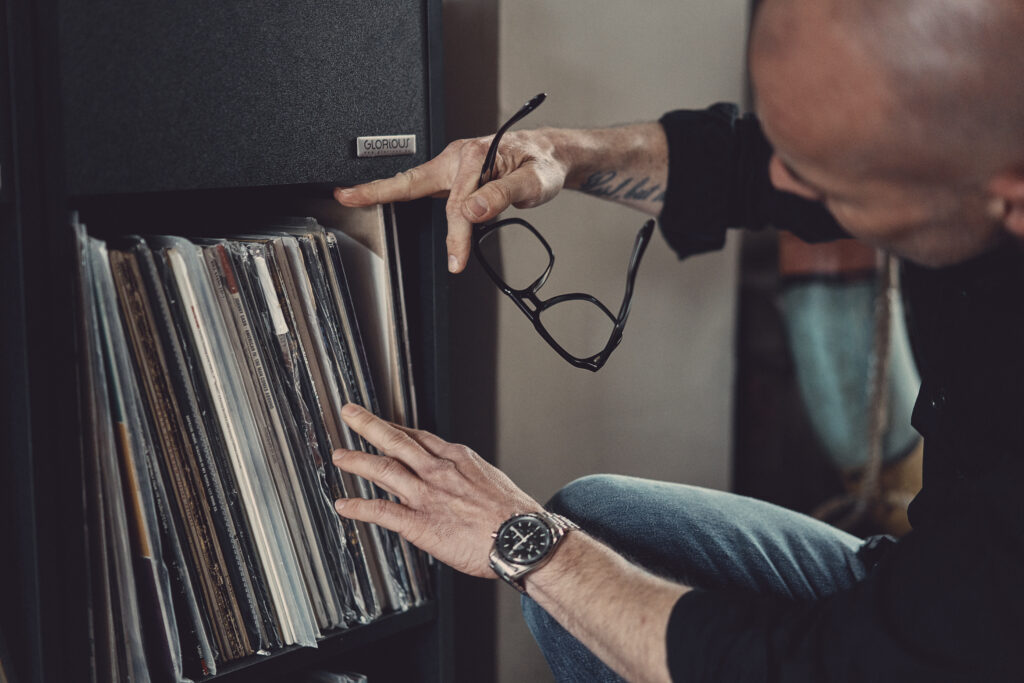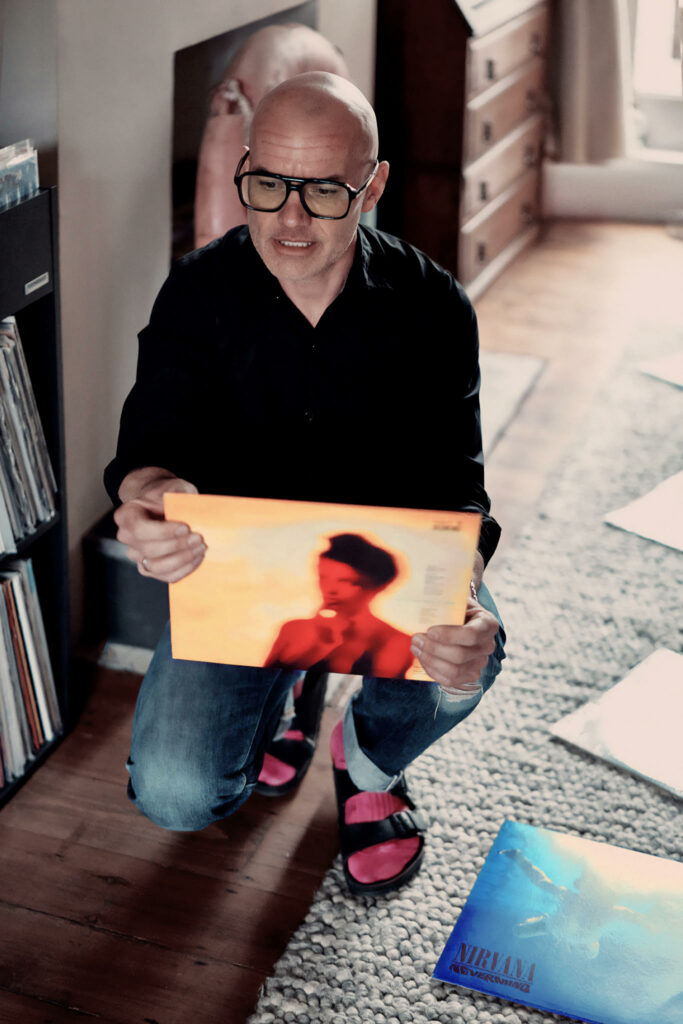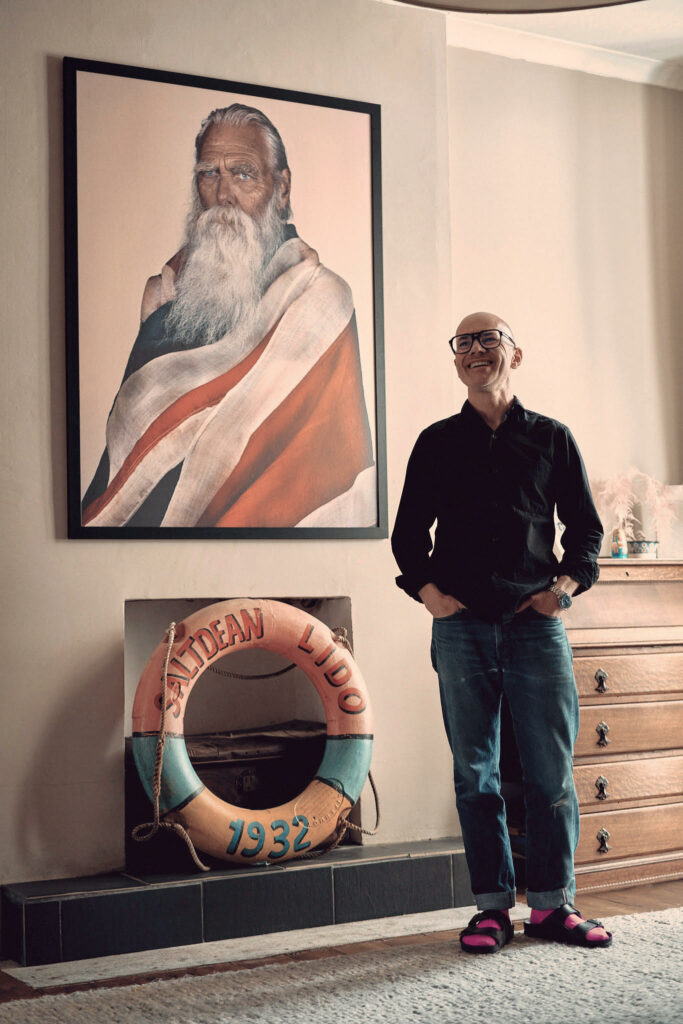ㅤㅤㅤㅤㅤㅤㅤㅤㅤㅤㅤㅤㅤㅤㅤㅤㅤㅤㅤㅤㅤㅤㅤㅤㅤㅤㅤㅤㅤㅤㅤㅤㅤㅤㅤㅤㅤ
Cutler and Gross’ In Conversation series celebrates the brand’s customers and their personal style. We look closer at their work and how they ended up in their individual creative field, what their specific craft looks like, the style journey they are on, and how their Cutler and Gross frames fit in with their unique aesthetic.
Interview and Art Direction David Hellqvist | Photography Tom Jamieson
To be a good portrait photographer, to really succeed in not only taking a photo but to tell a story with one single frame, you need to have to two major skills. One is purely technical: how to light the person, what camera to use, how to compose the shot through angles and shadows. Most people can grasp a fundamental understanding of this, if they put their mind to it and practice endlessly. The other bit, the one you can’t learn through reading a book, is how to be a people person. How you speak to the subject and make them feel at ease, how you make them give you the picture without them even knowing it’s done, that’s the real skill.
I’ve never been photographed by Brock Elbank, but I imagine – as I sit talking to him at his kitchen table in south London – that it is about more than just the photo with him, almost like a therapeutic experience. Of course, if you look at the kind of work Brock have dedicated the last few years of his professional career to, it’s easy to see why he has developed that skill. Since starting a photo series on men (and a woman) with beards in 2013, he’s been on a journey to find and document people with a unique and different kind of beauty than the one we are accustomed to see in magazines and on TV. With a diverse cast of people, either with life-altering scars, all-over freckles, severe skin conditions such as vitiligo and CMN, what all shots have in common is that the photographed person often battles daily preconceptions of what ‘normal’ looks like, and therefore what is considered ‘beautiful’.
Taken at Brock’s family home, in his makeshift living room studio, these portrait sessions attract people from all over the world, people who are perhaps tired of being stared at and want to take charge of their of own image, to control the narrative themselves. The relaxed environment, Brock’s self-deprecating approach, endless cups of coffee and a constant stream of vinyl music makes it less a ‘photo shoot’ and more of a good day out among friends … with a killer portrait at the end of it as a bonus result.

When you wake up, after your morning coffee, what is it that drives you to photograph, what’s your fundamental motivation?
It relaxes me as I’ve got a very busy head. My brain is a million miles an hour all the time, and I find photography extremely therapeutic. What I do is all about people, so it’s about finding characters that I feel inspired by, who interest me, that have got a journey that needs sharing. For me, it’s a meditation of sorts.
You’ve really found your niche; you’re known for a very particular style of photography – what are you are looking in a portrait subject?
When people apply for a series, if I see that they’re really stepping out of their comfort zone I’m immediately attracted to that, not in a physical way, but as a subject matter, because having someone take a big step and a risk that I know is going to benefit them from a mental point of view, and how they view themselves, and how they carry themselves moving forward, then that’s what I want.
“When I was aged 14 and bought U2’s ‘Joshua Tree’ album and seeing the work of Anton Corbijn who had shot the cover – that was the lightbulb moment for me.”
How does it work on the day, are they nervous?
Yeah sometimes. But everything is set up in my living room, we’ve obviously spoken numerous times, we’ve Facetimed, the ice has been broken, we double-check that they want to be part of the series, because they’re really putting themselves out there. By now I know a fair bit about them, but when they get here we drink loads of coffee and just chat. And then, when I think that they’re ready, we shoot.
Going back a bit in time, what was your first photo experience, you realising that being a photographer and taking someone’s portrait, it’s an actual job.
When I was aged 14 and bought U2’s ‘Joshua Tree’ album and seeing the work Anton Corbijn who had shot the cover – that was the lightbulb moment for me. At that point, my oldest sister was a graphic designer, and I was going to follow in her footsteps and design album covers, that’s what I wanted to do, but after that I just wanted to take photos.
It sounds like the music interest and knowledge was already there?
Yeah, music has always played a massive role in my life, I couldn’t do what I do without that. It’s like taste, it’s like smell, you hear a song you haven’t heard for 20 years and you still remember the lyrics – it transports you back in time, it’s that powerful. And taking it full circle to what I do today, it’s imperative that the people that I photograph listen to something that comforts them, something that they can relate to, and takes the edge off.

So they can choose what they want to listen to in the studio?
Yes, as long as it’s not Celine Dion, haha!
It can be quite vulnerable for you too, as the photographer, to put your work out there like you do?
Yeah, the worst part of the whole process for me is when I DM the images to the subject’s Instagram, and there is that moment when they’ve seen, it’ll say ‘seen’, but there’s no typing from their end. And that sort of white noise or black space, or whatever you want to call it, is the worst part. It’s the only bad part of the process because you want them to be happy.
“Remember, 99% of the people I shoot don’t do this for a living as a model, so it really is a ‘fish out of the water’ scenario.”
What’s it like working from home? You’re inviting people into your house, what are the pros and cons – it feels very personal, for both you and the subject?
That’s why I do it. Within 90 seconds of meeting someone I’ve got a very good idea of how they are going to be, and let’s say I’ve done 750 portraits since moving back from Sydney, there’s half a dozen people that the minute I’ve closed the door and showed them into the kitchen I’ve thought, ‘OK, this is going to be hard work’. So the ratio is pretty much in my favour, and it’s so important that they are comfortable, relaxed, and being in a proper studio can be an intimidating experience. Remember, 99% of the people I shoot don’t do this for a living as a model, so it really is a ‘fish out of the water’ scenario.
Are the shoots often quite emotional?
Yeah, there’s a lot of emotions flying around, I would say 30-40% of the time there’ll be some tears, sometimes I well up too because when you become a parent you do change, you think differently, you look at things differently, and there are just horrific instances that have happened to people that you just think, ‘How on earth do you bounce back from that?’ … but these people coming here have done that, and that can be emotional for sure. These people have been, you know, they’ve gone through windscreens at 100 miles an hour, taken the top bit of their head off, lost an eye, they’ve had 23 operations because they’ve got this rare cleft, they’ve been electrocuted by 17,000 volts. All these people have got Hollywood scripts in them.
The ‘Scars’ series is obviously about some sort of trauma, does that make it the most emotional one in a way?
No, not necessarily. We’ve done projects on CMN [congenital melanocyticnevus], which is a very rare birthmark, on vitiligo, port-wine stains and alopecia, and I understand where you’re coming from and what you’re getting at with the scars, because there is that physical trauma, but some of the subjects are born with something that have caused them emotional trauma as well as physical trauma. I mean, CMN is a birthmark that can kill the person with it.
So many people, so many amazing stories – anyone that stands out to you right here right now?
I shot a lady from Trinidad and Tobago who was born black, and she was lighter than me. And the trauma of losing her heritage identity, having her fellow countrymen pushing her away because she’s different and she doesn’t tick that box, so she loses her identity, she’s shunned by her own country. And then when I shot this woman her pigment started to come back from when she applied to be part of the series and we accepted that. She said, ‘I’m even more confused now because I had accepted myself physically, emotionally, mentally, but now my heritage is changing again and I’m back in limbo, I don’t know where I fit into society.’
Tell me about the Brock Elbank Foundation?
Yes, the reason we set up the foundation is so that we’re able to collaborate with other organisations and have the platform to do things bigger and better and tap into bigger resources. I’ve got a team of people working behind me that have got an amazing skillset that I don’t have: I’m a photographer, I can’t do a spreadsheet! It’s great having a team of people around me who are passionate about what we’ve already done, and who just want to do it bigger and better, to continue producing work that gets the viewer thinking and educates people – that’s so important.
Discover more about the Brock Elbank Foundation by visiting www.mrelbank.com
You can listen to Brock Elbank’s podcast ‘Face Value with Brock Elbank’ wherever you find your podcasts.



